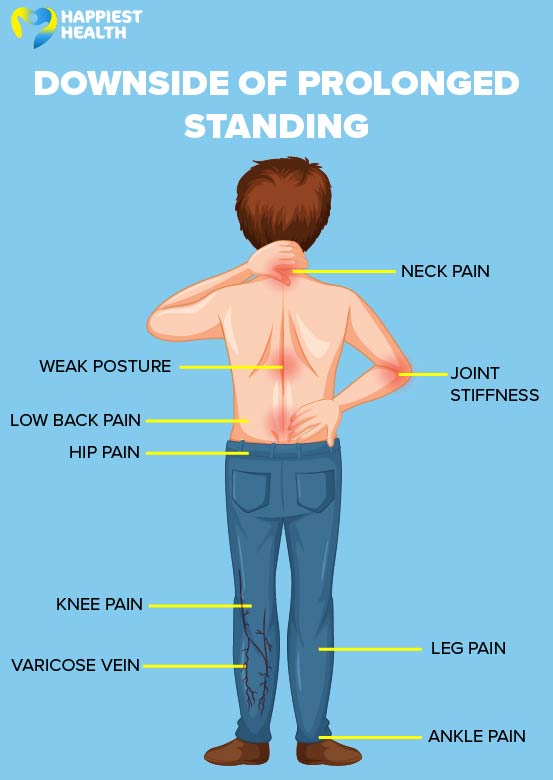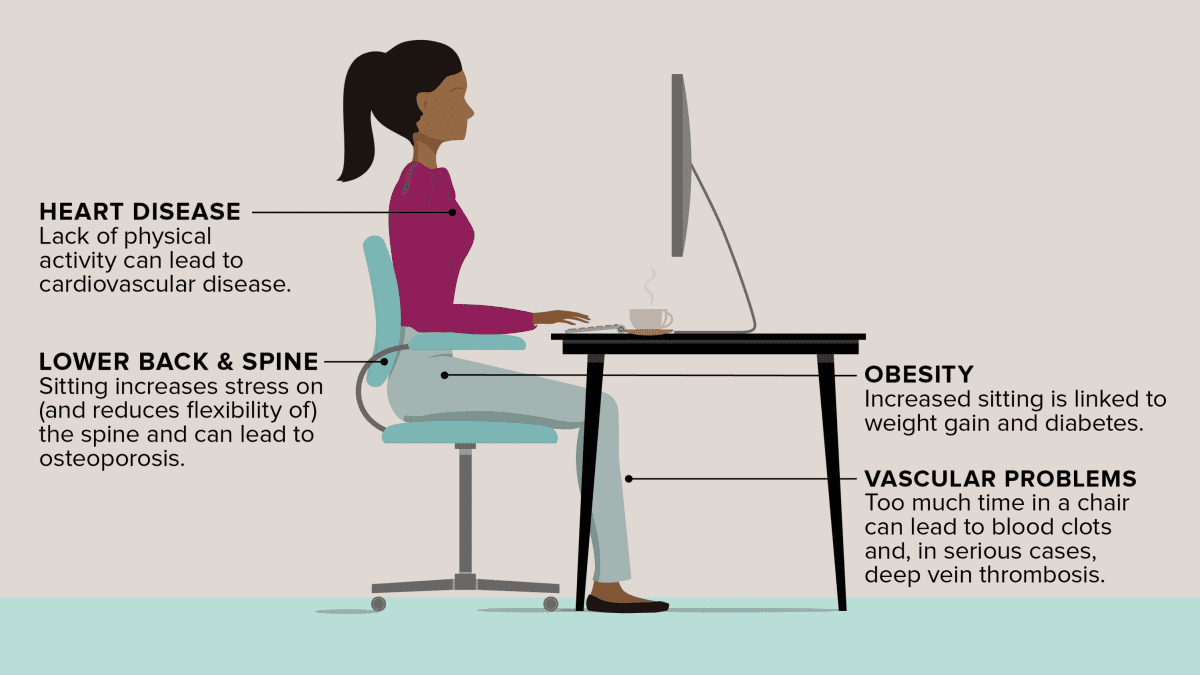We all know the dangers of a sedentary lifestyle. But for office workers, the question becomes: how much standing is actually good for you?
The Downside of Sitting
Sitting for long periods takes a toll on the body. Here's what can happen:
- Muscle weakness and strain: Inactivity weakens leg muscles, making them more prone to injury. Hips also tighten, leading to discomfort.
- Varicose veins: Sitting restricts blood flow, potentially causing varicose veins and blood clots.
-
Lower back pain: Poor posture and slouching while sitting can aggravate back issues.
The Benefits of Short Standing Breaks
Even brief standing breaks can make a big difference:
- Improved circulation: Standing gets the heart pumping and blood flowing better.
- Reduced muscle tension: Standing stretches leg muscles and releases pressure on the back.
- Improved focus: Standing can give your eyes a break from the screen and refocus your attention.
The Risks of Standing for Too Long
While standing offers benefits, it's not perfect either. Standing for extended periods (over 8 hours daily) can cause:
- Lower back pain: Constant standing puts strain on the back.
- Leg and tendon issues: Prolonged standing can lead to leg muscle and tendon problems.
-
Chronic venous insufficiency: This condition affects circulation, causing discomfort and potentially worse issues.

So What's The Ideal Standing Time?
There's no one-size-fits-all answer. Experts recommend standing for 5-15 minutes per hour when using a standing desk. Research also suggests aiming for at least 2 hours of total movement and standing during an 8-hour workday.
Remember, standing time includes walking around the office, trips to get coffee, or short stretches. A standing desk simply makes reaching your overall activity goal easier.
The Key: Frequent Position Changes
The most significant benefit comes from switching between sitting and standing. Experts recommend doing this every 30 minutes or so.
Finding Your Perfect Mix
An adjustable standing desk is crucial for creating a sit-stand routine. Studies show that adjustable desks:
- Increase the ratio of standing to sitting
- Improve comfort at work
Here are some additional tips:
- Set reminders: Use your phone or a timer to prompt yourself to stand.
- Associate standing with tasks: Make standing a habit by incorporating it into your routine during calls or meetings.
- Build your tolerance: Start small and gradually increase standing time as you get used to it.
- Prioritize comfort: Stand on the balls of your feet with slightly bent knees for better posture and reduced stress on hips and knees.
Making Standing Easier
- Adjustable standing desk: Choose a desk with easy and quick height adjustment to seamlessly switch between sitting and standing.
- Anti-fatigue mat: These mats provide extra cushion and support, making standing more comfortable and preventing fatigue.
-
Consider a contoured mat: Some mats encourage small movements that improve circulation and alleviate leg and back discomfort.

To conclude, the key takeaway message is to Stand as much as comfortably possible. A standing desk empowers you to find the perfect balance for a healthier and more productive workday.
Ditch the chair and embrace a healthier way to work! Visit Ergonest Today! to discover the revolutionary world of standing desks!
Ergonomic Excellence, Ergonest UK


